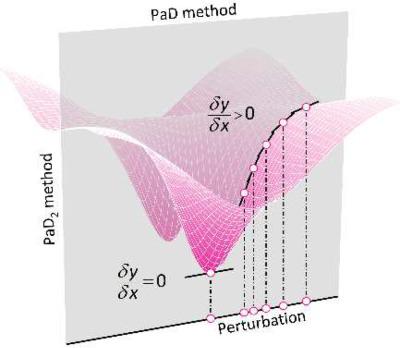当前位置:
X-MOL 学术
›
J. Comput. Chem.
›
论文详情
Our official English website, www.x-mol.net, welcomes your
feedback! (Note: you will need to create a separate account there.)
Interpretation of ANN-based QSAR models for prediction of antioxidant activity of flavonoids
Journal of Computational Chemistry ( IF 3.4 ) Pub Date : 2018-02-05 , DOI: 10.1002/jcc.25168 Petar Žuvela 1 , Jonathan David 1 , Ming Wah Wong 1
Journal of Computational Chemistry ( IF 3.4 ) Pub Date : 2018-02-05 , DOI: 10.1002/jcc.25168 Petar Žuvela 1 , Jonathan David 1 , Ming Wah Wong 1
Affiliation

|
Quantitative structure–activity relationships (QSARs) built using machine learning methods, such as artificial neural networks (ANNs) are powerful in prediction of (antioxidant) activity from quantum mechanical (QM) parameters describing the molecular structure, but are usually not interpretable. This obvious difficulty is one of the most common obstacles in application of ANN‐based QSAR models for design of potent antioxidants or elucidating the underlying mechanism. Interpreting the resulting models is often omitted or performed erroneously altogether. In this work, a comprehensive comparative study of six methods (PaD, PaD2, weights, stepwise, perturbation and profile) for exploration and interpretation of ANN models built for prediction of Trolox‐equivalent antioxidant capacity (TEAC) QM descriptors, is presented. Sum of ranking differences (SRD) was used for ranking of the six methods with respect to the contributions of the calculated QM molecular descriptors toward TEAC. The results show that the PaD, PaD2 and profile methods are the most stable and give rise to realistic interpretation of the observed correlations. Therefore, they are safely applicable for future interpretations without the opinion of an experienced chemist or bio‐analyst. © 2018 Wiley Periodicals, Inc.
中文翻译:

解释基于 ANN 的 QSAR 模型预测黄酮类化合物的抗氧化活性
使用机器学习方法(例如人工神经网络 (ANN))构建的定量结构-活性关系 (QSAR) 在根据描述分子结构的量子力学 (QM) 参数预测(抗氧化)活性方面非常强大,但通常无法解释。这种明显的困难是应用基于 ANN 的 QSAR 模型设计有效抗氧化剂或阐明潜在机制的最常见障碍之一。对结果模型的解释经常被忽略或完全错误地执行。在这项工作中,提出了六种方法(PaD、PaD2、权重、逐步、扰动和轮廓)的综合比较研究,用于探索和解释为预测 Trolox 等效抗氧化能力 (TEAC) QM 描述符而构建的 ANN 模型。排名差异总和 (SRD) 用于根据计算的 QM 分子描述符对 TEAC 的贡献对六种方法进行排名。结果表明,PaD、PaD2 和剖面方法是最稳定的,可以对观察到的相关性进行真实的解释。因此,它们可以安全地应用于未来的解释,而无需经验丰富的化学家或生物分析师的意见。© 2018 Wiley Periodicals, Inc. 无需经验丰富的化学家或生物分析师的意见,它们可以安全地应用于未来的解释。© 2018 Wiley Periodicals, Inc. 无需经验丰富的化学家或生物分析师的意见,它们可以安全地用于未来的解释。© 2018 Wiley Periodicals, Inc.
更新日期:2018-02-05
中文翻译:

解释基于 ANN 的 QSAR 模型预测黄酮类化合物的抗氧化活性
使用机器学习方法(例如人工神经网络 (ANN))构建的定量结构-活性关系 (QSAR) 在根据描述分子结构的量子力学 (QM) 参数预测(抗氧化)活性方面非常强大,但通常无法解释。这种明显的困难是应用基于 ANN 的 QSAR 模型设计有效抗氧化剂或阐明潜在机制的最常见障碍之一。对结果模型的解释经常被忽略或完全错误地执行。在这项工作中,提出了六种方法(PaD、PaD2、权重、逐步、扰动和轮廓)的综合比较研究,用于探索和解释为预测 Trolox 等效抗氧化能力 (TEAC) QM 描述符而构建的 ANN 模型。排名差异总和 (SRD) 用于根据计算的 QM 分子描述符对 TEAC 的贡献对六种方法进行排名。结果表明,PaD、PaD2 和剖面方法是最稳定的,可以对观察到的相关性进行真实的解释。因此,它们可以安全地应用于未来的解释,而无需经验丰富的化学家或生物分析师的意见。© 2018 Wiley Periodicals, Inc. 无需经验丰富的化学家或生物分析师的意见,它们可以安全地应用于未来的解释。© 2018 Wiley Periodicals, Inc. 无需经验丰富的化学家或生物分析师的意见,它们可以安全地用于未来的解释。© 2018 Wiley Periodicals, Inc.











































 京公网安备 11010802027423号
京公网安备 11010802027423号